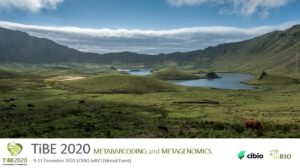DNA BARCODING OF PORTUGUESE NEUROPTERA
DNA BARCODING OF PORTUGUESE NEUROPTERA
Sónia Ferreira (CIBIO-InBIO, Portugal) | June 17, 2019 | 8th International Barcode of Life Conference, Trondheim, Norway
Background: Neuroptera is an order of insects comprising about 5500 species worldwide, 300 of which are present in Europe, and includes the lacewings, mantidflies, antlions, and their relatives. Larval and adult forms of this group are important predators of agricultural pests, such as aphids, mites, and other insects. Albeit their relative ubiquity and notable importance, information on the group is still lacking, most considerably regarding taxonomic, genetic, and distributional data of several species, even in Europe. As an example, out of the 5500 extant species, less than 7% show available DNA barcodes in BOLD. In the Iberian Peninsula, the situation is also dire, as of the over 120 species known, only about a third have DNA barcode sequences in the database, but only 33 specimens originate from the region. This project focuses on Neuroptera from Portugal and is conducted within the framework of the InBIO Barcoding Initiative (IBI), a DNA barcoding initiative developed in CIBIO/InBIO and aiming to DNA barcode all terrestrial invertebrate groups of Portugal. We carried out fieldwork to collect specimens of species currently unavailable and that have never been barcoded. Results: Within the InBIO Barcoding Initiative, we have DNA barcoded more than 50 species of seven families of neuropterans. Genomic DNA was extracted, and the barcoding mitochondrial COI gene fragment (658 bp) was amplified. DNA barcodes were sequenced using high-throughput sequencing (Illumina). Most species could be easily distinguished using the targeted sequence, but some cases of low divergence between species were also detected. Cryptic diversity was found in some cases, especially between specimens from Iberia and central Europe. Significance: The DNA barcoding of Portuguese Neuroptera is directly assisting the application of DNA metabarcoding techniques towards a better understanding of food web complexity in Mediterranean ecosystems, and the identification of trophic relationships relevant for pest management.







